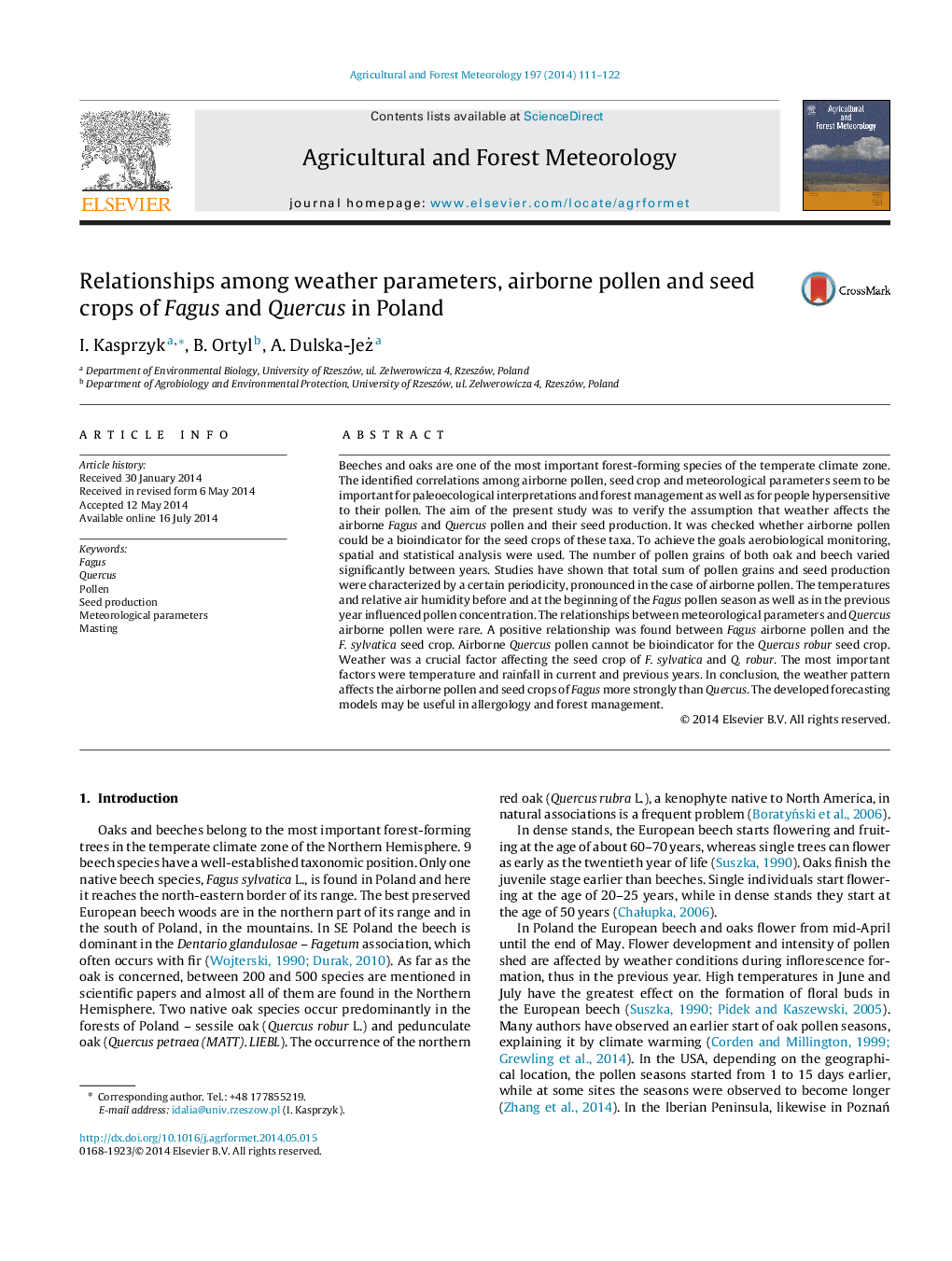| کد مقاله | کد نشریه | سال انتشار | مقاله انگلیسی | نسخه تمام متن |
|---|---|---|---|---|
| 81708 | 158332 | 2014 | 12 صفحه PDF | دانلود رایگان |

• The weather stronger affects the airborne pollen and crops of Fagus than Quercus.
• We proved that airborne pollen can be bio-indicator for Fagus sylvatica seed crop.
• Annual pollen grains sum and seed crop were characterized by a certain periodicity.
• We showed that there was spatial synchrony in mast years of Fagus sylvatica.
Beeches and oaks are one of the most important forest-forming species of the temperate climate zone. The identified correlations among airborne pollen, seed crop and meteorological parameters seem to be important for paleoecological interpretations and forest management as well as for people hypersensitive to their pollen. The aim of the present study was to verify the assumption that weather affects the airborne Fagus and Quercus pollen and their seed production. It was checked whether airborne pollen could be a bioindicator for the seed crops of these taxa. To achieve the goals aerobiological monitoring, spatial and statistical analysis were used. The number of pollen grains of both oak and beech varied significantly between years. Studies have shown that total sum of pollen grains and seed production were characterized by a certain periodicity, pronounced in the case of airborne pollen. The temperatures and relative air humidity before and at the beginning of the Fagus pollen season as well as in the previous year influenced pollen concentration. The relationships between meteorological parameters and Quercus airborne pollen were rare. A positive relationship was found between Fagus airborne pollen and the F. sylvatica seed crop. Airborne Quercus pollen cannot be bioindicator for the Quercus robur seed crop. Weather was a crucial factor affecting the seed crop of F. sylvatica and Q. robur. The most important factors were temperature and rainfall in current and previous years. In conclusion, the weather pattern affects the airborne pollen and seed crops of Fagus more strongly than Quercus. The developed forecasting models may be useful in allergology and forest management.
Journal: Agricultural and Forest Meteorology - Volume 197, 15 October 2014, Pages 111–122